Eager to capture some of the newfound interest in boutiques and more avant-garde fashion, the venerable department store Bonwit Teller decided in 1966 to open a shop-within-a-shop that replicated the energy and creativity of the boutiques that had begun springing up around all major cities. Launched at their NYC and Chicago stores that May, the S’fari Room was so-called because it provided unusual items that were difficult to find, not that it was African-themed. There were nods to that continent in the design; the Chicago S’fari Room was described as having leopard wallpaper and rattan chairs cushioned with more leopard print, along with “masks, spears, and white globe lanterns… on the walls. A smashing arrangement of screaming orange paper flowers burgeoning from a straw basket, is centered on a table draped in more of that leopard print.”

An ad publicizing the opening beckoned shoppers to “Hunt out fashion excitement in our new S’fari Room. Come see the spectacular clothes we’ve tracked down from the world over… highly individual sportswear, unusual at-home clothes… all with an off-the-beaten-track flavor…” The labels offered at the beginning were Rudi Gernreich, Samuel Robert, Tiger Morse, Edie Gladstone, Ken Scott, Sportswear Couture, Tiffeau and Busch, Bill Blass, Ernst Engel and Strega, “all gathered in this exotic spot where jungle meets fashion.” Shoppers were invited to “stalk on down!” All American (though Scott was based in Italy), these designers (for the most part) were creating youthful sportswear. As the S’fari Room proved to be a successful concept, Bonwit’s began introducing more European lines. Ungaro, then only a year into having his own house, was a hit for them, with his Space Age coats and seamed A-line dresses. Jumping on the “European boutique bandwagon,” they brought in a group of items from boutiques scattered around the continent: “Choses in St. Tropez… Kouras in Mykonos… Madam ‘D in Casablanca… Princess Tazi of Marbella”—a veritable map of jet set hotspots.

On September 20th, the S'fari Room held a cocktail reception for Princess Luciana Pignatelli’s new line of “sophisticated play clothes and caftans” (“very white and “very cool”) that was attended by all of her equally glamorous friends—Minnie Cushing, Chessie Rayner and Cristina Ford, among them. The S’fari Room was becoming not just the place to shop but also the place to be seen.
The S’fari Room was the idea of Mildred Custin, the president of Bonwit Teller’s 12 stores as of 1965. She set out to modernize them (“dusting,” as she described it), bringing in new buyers, and introducing new departments and designers. According to Custin, “It is up to the fashion retailer to mold the tastes of the consumer. That’s why I feel so strongly about editing. We are always interested in well-bred fashions and the contemporary look. We edit out the kooky and the vulgar.” Due to her, Bonwit’s was the first American store to showcase Cardin’s menswear with its own boutique, completely upending ideas about men’s suiting. Budget-conscious, young fashions were sold in the Espresso Shop—“great clothes, groovy atmosphere”—which operated as a sort of conduit to the more out-there styles available in the S’Fari Room.

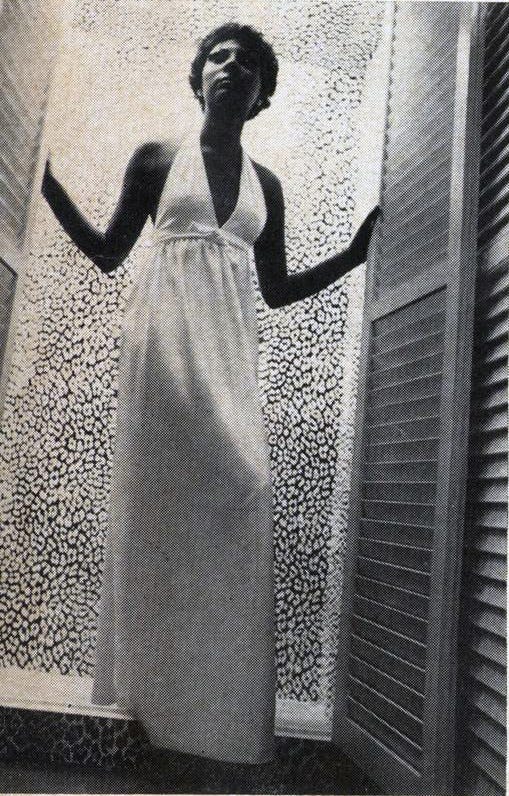
“What’s so unique about Bonwit’s S’fari Room? Everything! It’s the boutique for the unique that New Yorkers flock to when they want a fashion that’s not just one of the flock.” – Ad, 1972
Encompassing the broad reaches of forward-thinking fashion, in 1968 the S’fari Room introduced both the apex of Space Age style, Courrèges, and the most archetypal of romantic revivalism, Annacat—clean lines and copious ruffles sharing racks in leopard print rooms at now almost all Bonwit Teller stores. As fashion splintered into a cacophony of acceptable looks, the S’fari Room provided them all—one ad offered a leather Nehru suit from Samuel Robert, a Rudi Gernreich knit mini with spiraling zip, a sweeping silk gown, a Cossack-style floral mini dress by Ken Scott, and a floor-length kilt—“all manner of wild and wonderful things.”

The addition of Giorgio di Sant’Angelo—known for his artful comingling of a multitude of ethnic ideas, hippie style gone luxe—in early 1969 further enhanced the eclectic merchandising of the S’fari Room. That March Jacqueline Onassis stopped by to pick up a pair of Sant Angelo’s purple Enkalure nylon harem pants and red suede vest (both of which had been featured on Jean Shrimpton in the latest issue of Vogue.) He soon became their top seller, alongside his complete opposites, Courrèges and Ungaro.
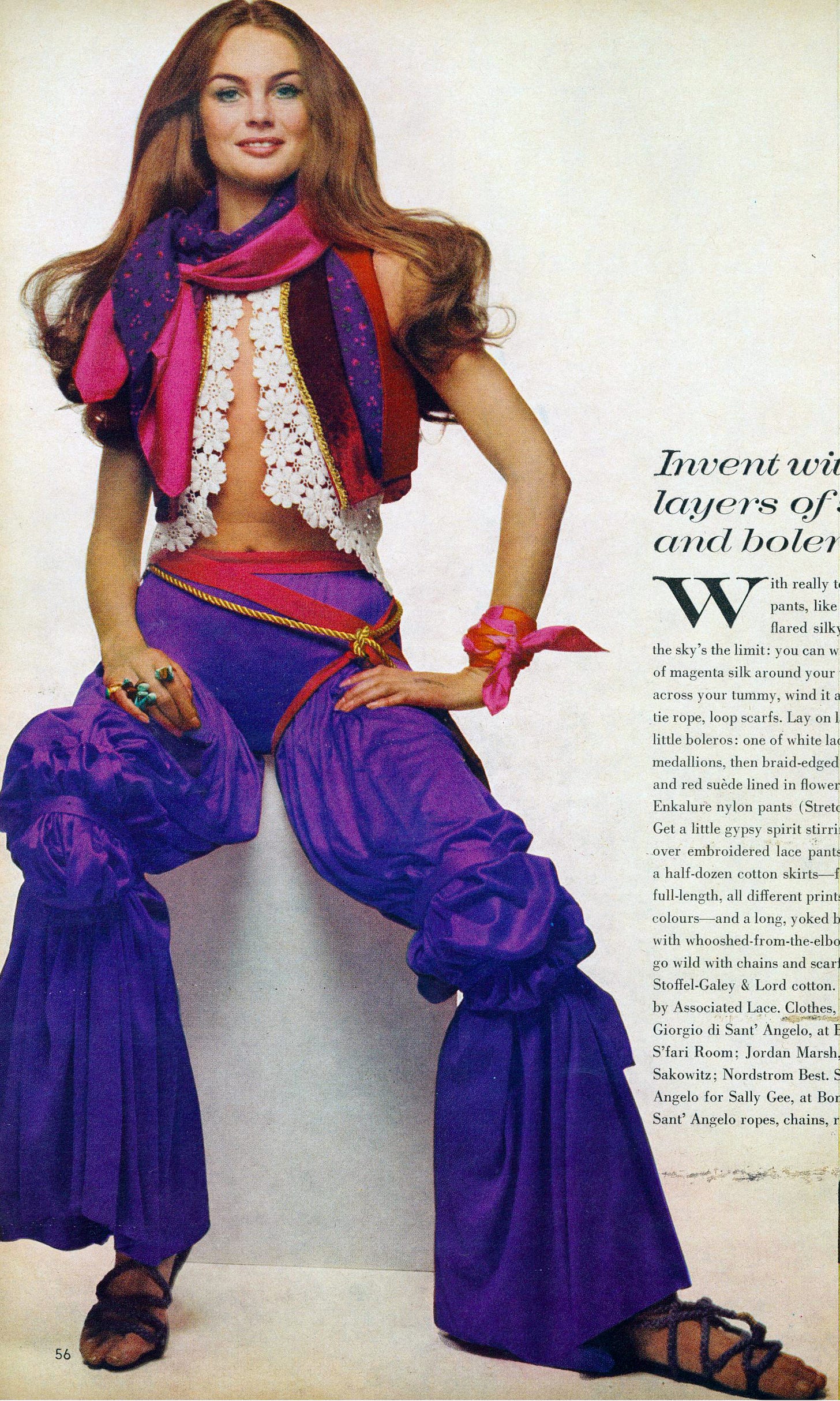
Custin retired as chairman of the board in 1969, yet her imprint continued. Some of the S’fari rooms were redesigned in 1970—now stark white and purple—yet still with an intriguing combination of designers. That fall, Hollywood and Broadway costume designers Ray Aghayan and Bob Mackie produced their first-ever fashion collection specially for the S’fari room—romantic revivalism with leg-o’-mutton sleeves, lace insets, ginghams, and full skirts. Stephen Burrows' color-blocked jerseys and Ossie Clark’s floating chiffons also made appearances. When Bonwit’s opened their first West Coast location in 1971, in Beverly Hills, the S’fari Room featured “peacock straw chairs, African painted wicker chests and old diving-board floor covering” and was the first department store to sell Holly Harp’s designs.
After 1973, Bonwit’s stopped placing the same level of attention on the S’fari Room. It existed in stores until at least the early 1980s, but it was no longer seen as the place to go for avant-garde fashions. When the Fifth Avenue Art Deco flagship underwent a massive renovation in 1976, the S’fari Room was one of the only spaces not to be redesigned. After a series of corporate takeovers, Bonwit Teller was acquired by Allied Stores in 1979. They closed the flagship store and sold the property for $15 million to Donald Trump, which he demolished to build Trump Tower—to learn more about Trump’s destruction of the priceless Deco grillwork and bas reliefs, read here and here. During this period, Bonwit Teller had set up a new flagship on 57th Street; it is unclear if the S’fari Room was reconstructed at this site. Caught up in the department store consolidation mess of the 1980s and 1990s, the department store chain moved from company to company. Skirting bankruptcy several times, the final store closed in 2000—the adventuresome merchandising of the S’fari Room long forgotten.
Bonwit’s illustrated ads for the S’fari Room are particularly evocative of the “anything goes” fashion fun of the late 1960s and early 1970s. Here are some more of my favourites":













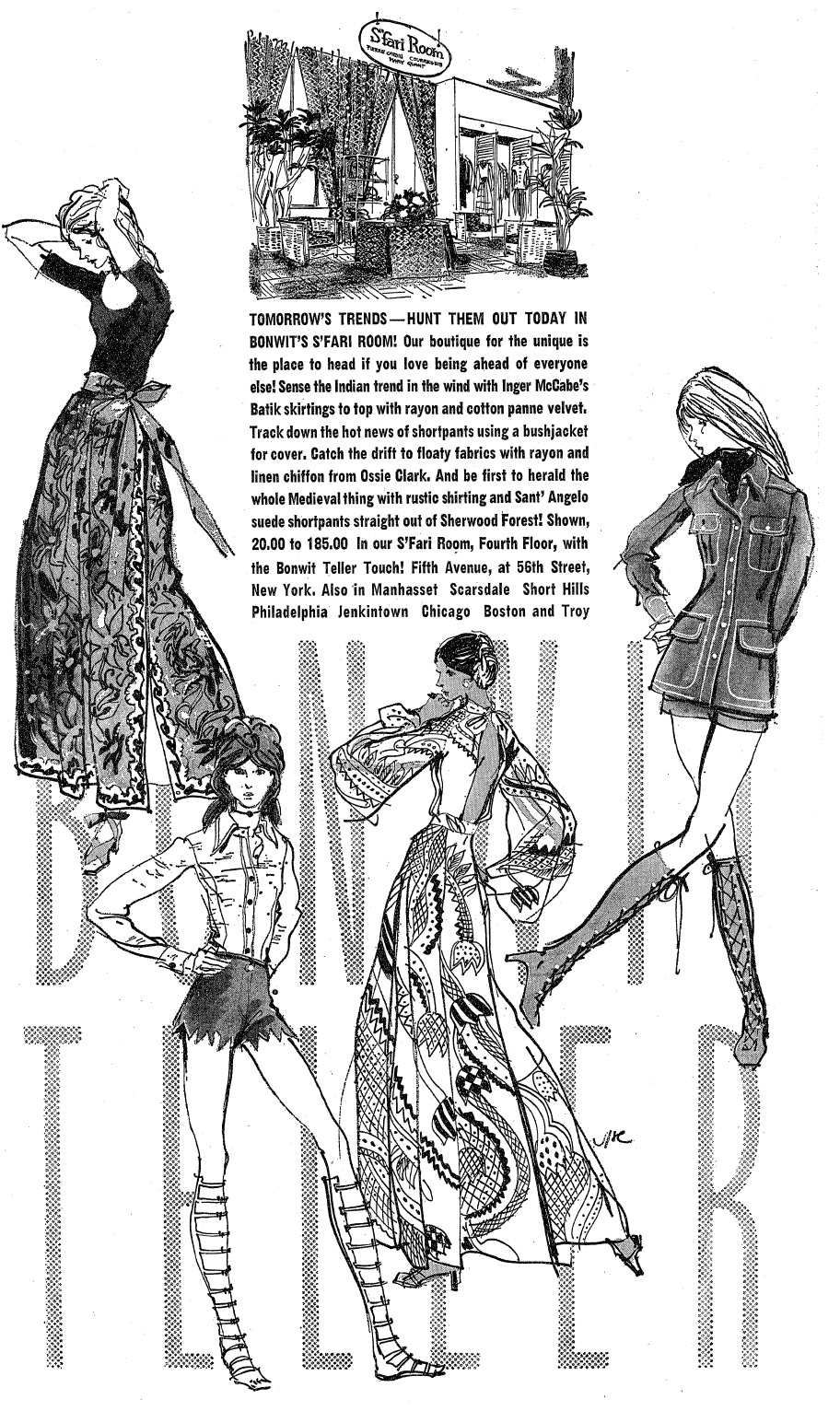



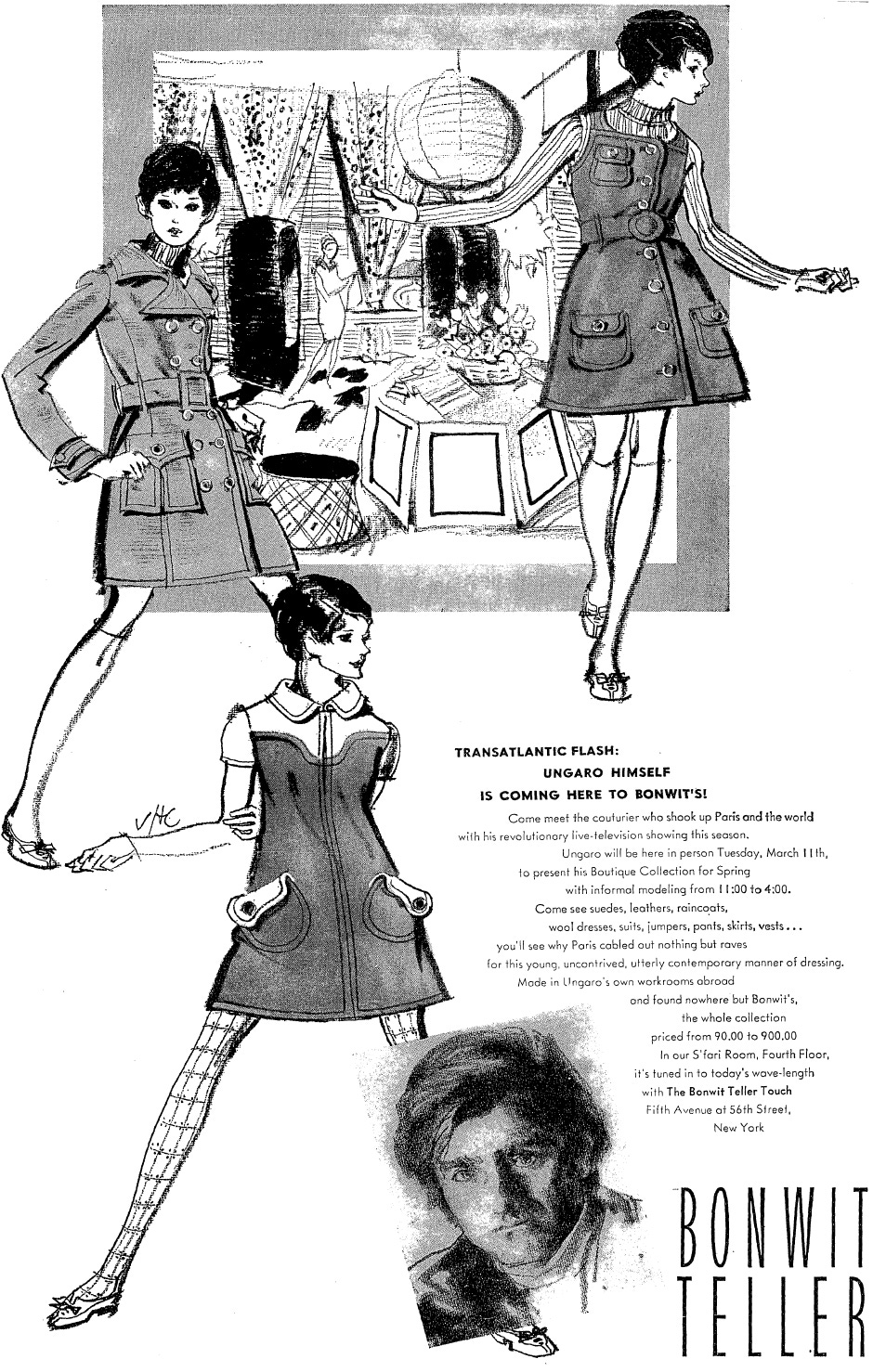




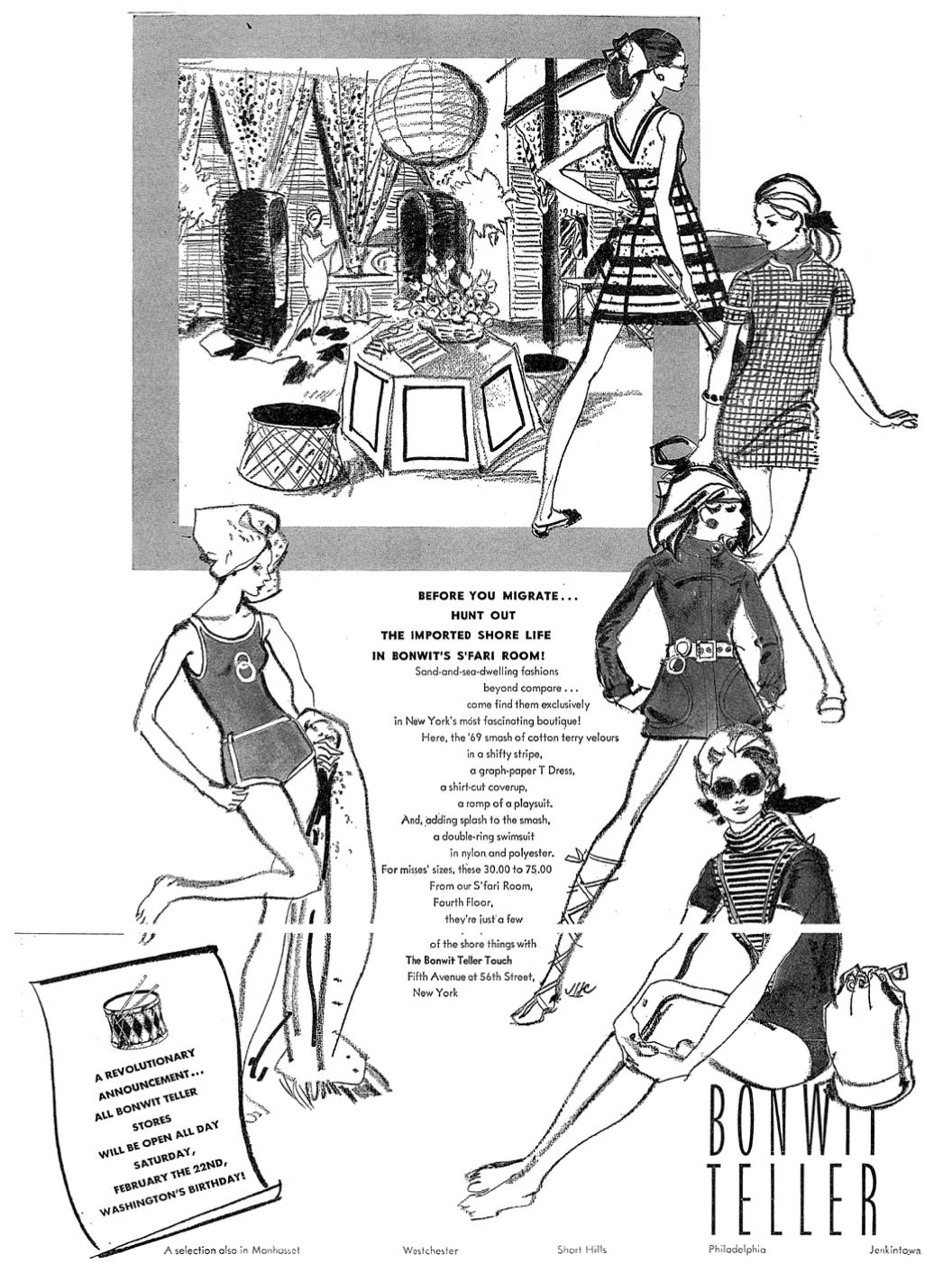




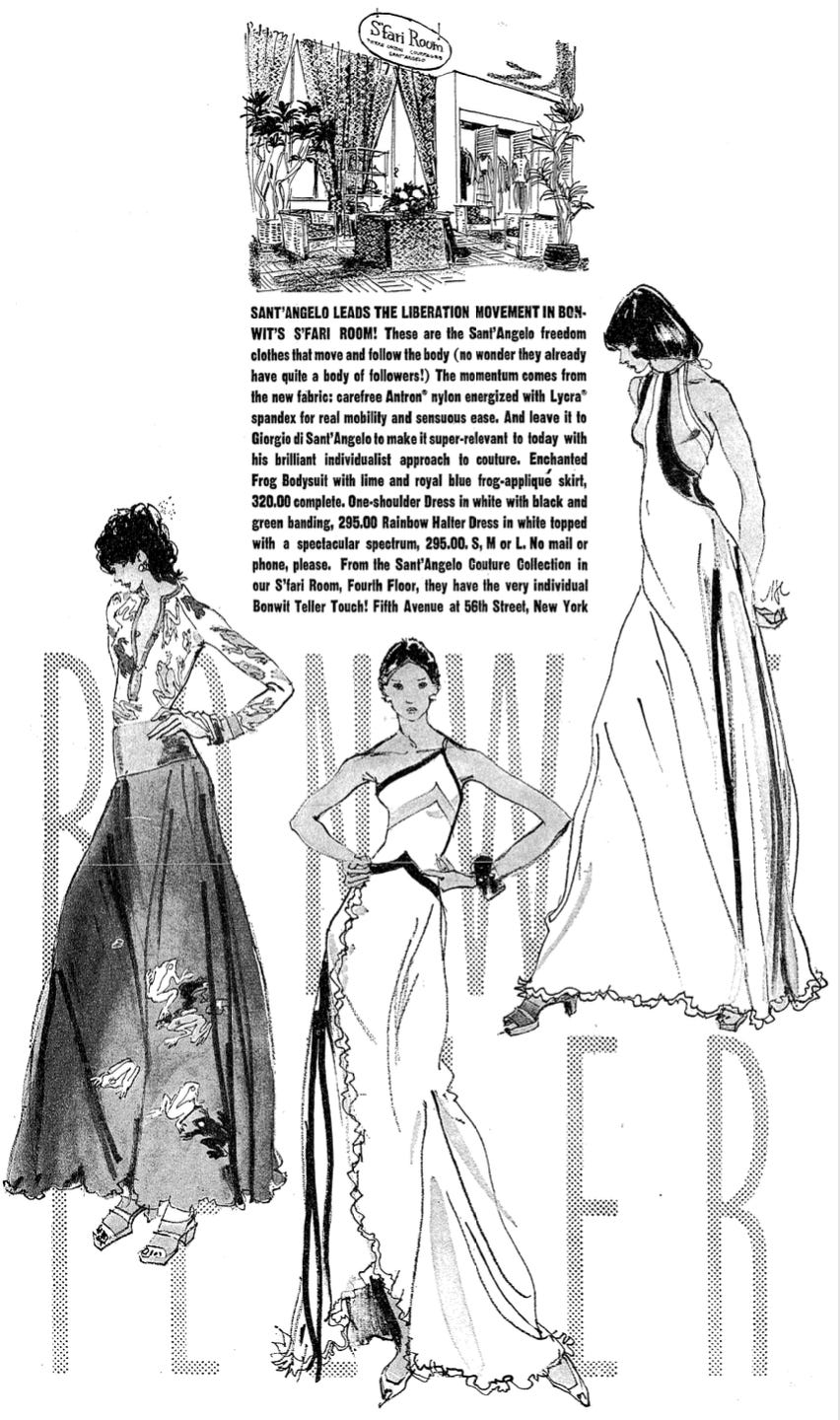





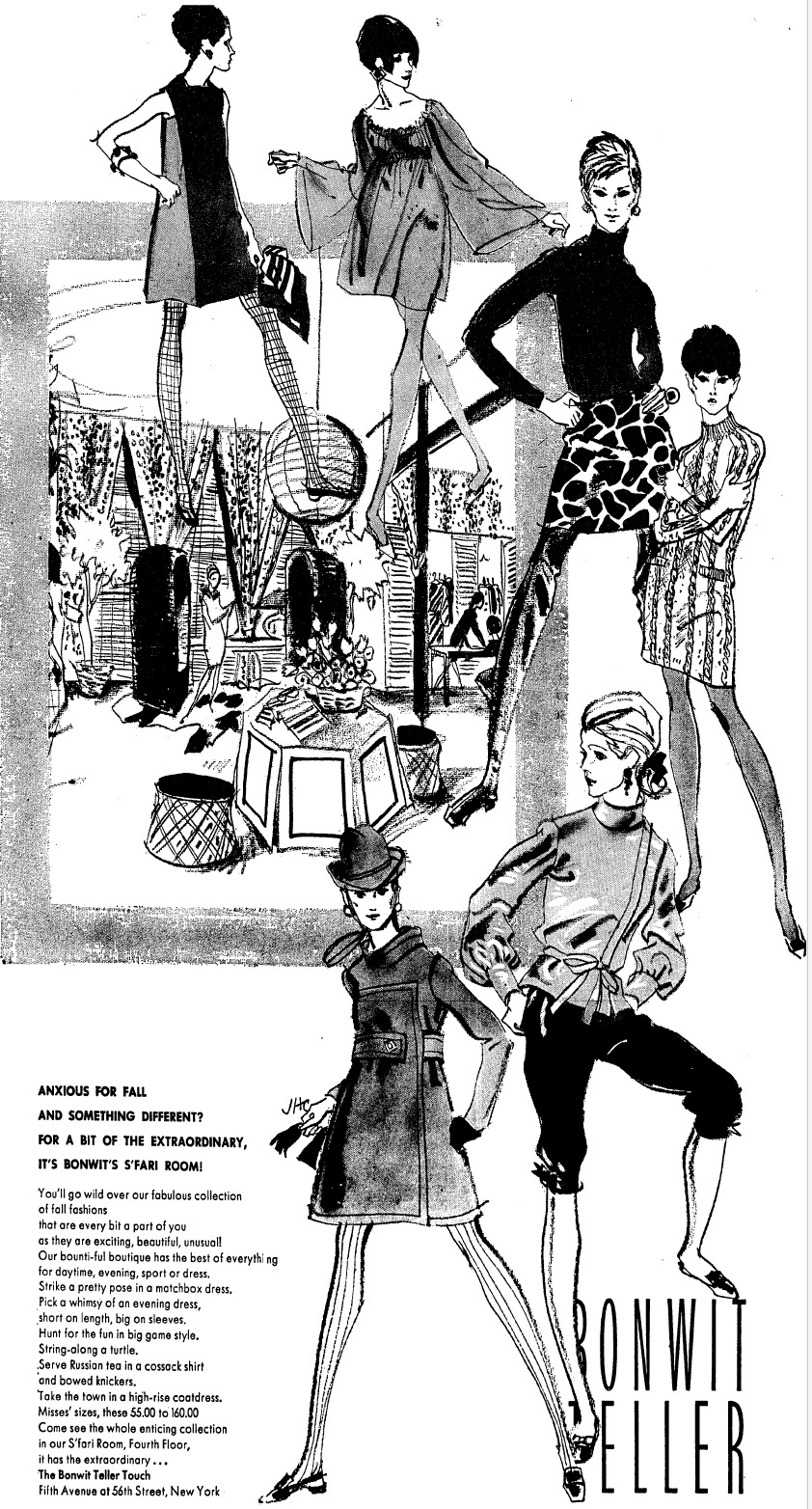

Curious if you ever see any Tiger Morse clothing for sale online. She has such a crazy (and sad) story.